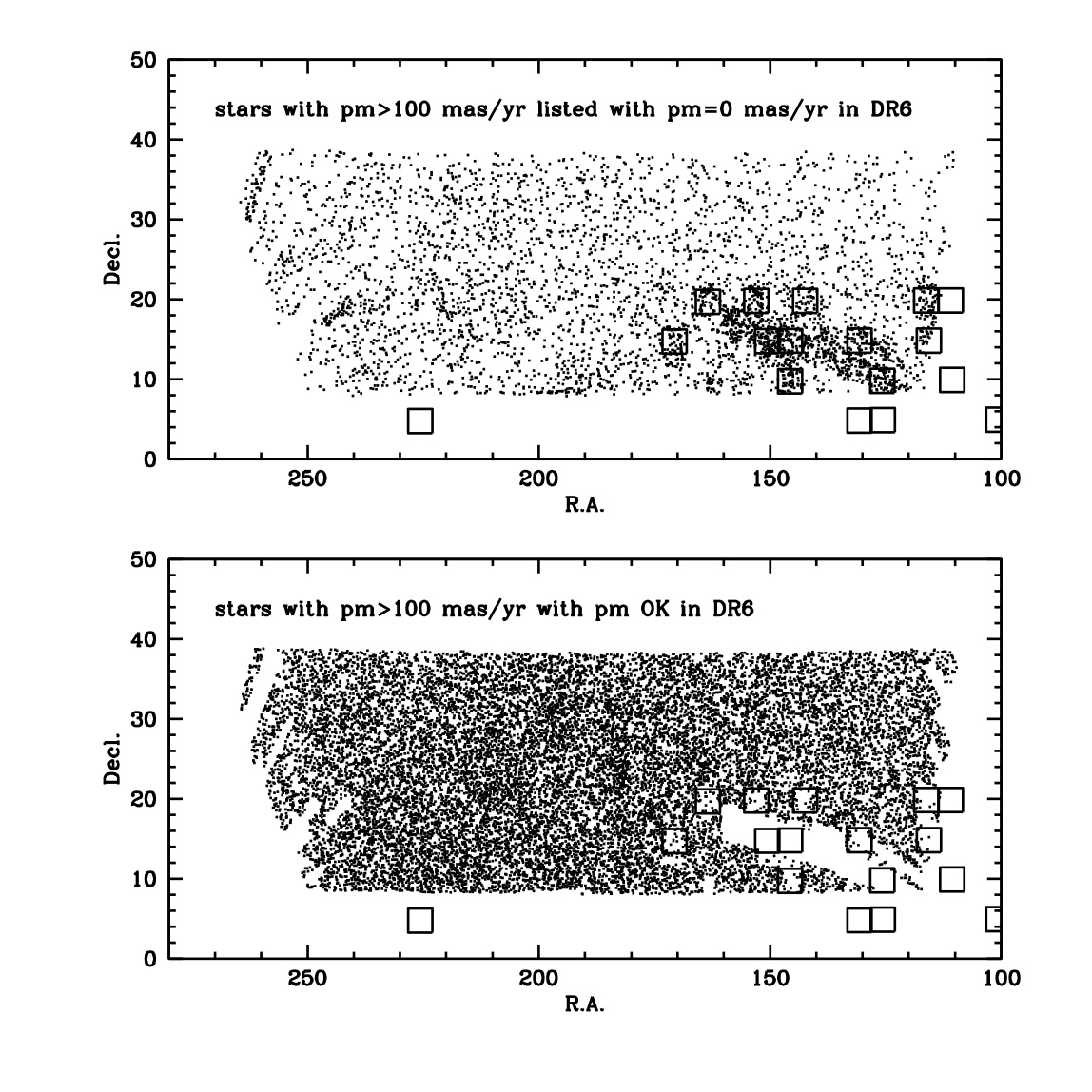
Calibrated object listsUp: Data Products Sections: Images - Object lists - Spectra - TilingAbout SDSS object listsThe calibrated object lists reports positions, fluxes, and shapes of all objects detected at >5 sigma on the survey images. Photometry is reported on the natural system of the APO 2.5m survey telescope (a system which includes 1.3 airmasses at APO; see description of photometric flux calibration) in asinh magnitudes. Getting and using object listsYou need to look at the object flags in the object lists to obtain meaningful results. Calibrated object lists are stored in two file types in the Data Archive Server:
The The data access page contains various query forms to search the object lists by coordinates, magnitude, color etc., and to retrieve data from the archive. In particular, the Catalog Archive Server provides a fast search capability for object lists and spectroscopic parameters as well as pointers to the files in the Data Archive Server. The Imaging Query Server query form is dedicated to the search of the imaging database. CaveatsMissing high proper-motion stars in SDSS DR6 and beforeA comparison of SDSS catalogs has shown that high proper motion stars from Sebastien Lepine's database (SUPERBLINK) are not registered as high proper motion stars in the DR6. For those stars, the ProperMotions table lists pm=0.0. The reason their motion is not registered in DR6 is because of the incompleteness of the USNO-B catalog, from which the DR6 proper motions are derived. Areas where the imcompleteness is particularly severe include regions where there are bad SERC-I or POSS-II N plates (open squares, list from J. Munn). If one tries to select off nearby stars with e.g. a pm<0.75 mas/yr proper motion cutoff, then the sample will be contaminated with these "pm=0" high proper motion stars. The plot shows the stars with pm>100 mas/yr, which are relatively rare, but I suspect that a similar fraction of 10 mas/yr < pm < 100 mas/yr stars will be similarly unregistered in the DR6, which can add up a lot of foreground contaminants. 

Top panel: high proper motion stars from the Superblink survey that are missing in DR6. Bottom panel: High proper motion stars recovered by SDSS. At the moment, the only mitigation strategy is to avoid the regions where contamination will be most severe. Incomplete and/or inaccurate photometry at low galactic latitudesMuch of the data in SEGUE and DRsup is imaging at low Galactic latitude |b| < 25 degrees, and as such, there are highly crowded fields, and regions of high extinction. These data were processed with the standard SDSS photo pipelines. Since these pipelines were not designed to work in such crowded regions, the quality of the photometry in these areas is not guaranteed to be accurate to the SDSS quoted limits of 2% in color and r magnitude, nor is each and every crowded frame fully deblended; i.e. many fields are incompletely cataloged. Overestimation of sky levels in the vicinity of bright objects |
